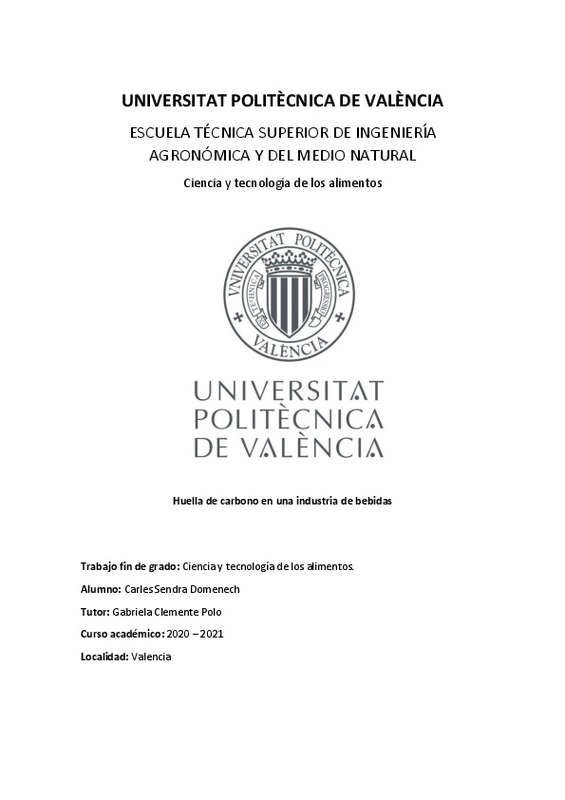|
Resumen:
|
[ES] El interés de la sociedad por el medio ambiente es cada vez mayor. Los consumidores se preocupan cada vez más por que las empresas que suministran los alimentos que consumen tengan el menor impacto ambiental posible. ...[+]
[ES] El interés de la sociedad por el medio ambiente es cada vez mayor. Los consumidores se preocupan cada vez más por que las empresas que suministran los alimentos que consumen tengan el menor impacto ambiental posible. Por ello, para una empresa alimentaria es muy importante calcular su Huella de Carbono. Esto le permite identificar aquellos puntos del proceso de producción que tengan una mayor contribución a la misma, de modo que pueda mejorar sus procesos con el objetivo de reducir las emisiones de Gases de Efecto Invernadero (GEI).
En este TFG se va a calcular la Huella de Carbono de una industria de bebidas. Para ello en primer lugar se va a realizar un dimensionado de los procesos empleados en la producción de diferentes productos, concretamente, un zumo de frutas, un refresco con gas y una bebida vegetal. Esto permitirá identificar las distintas etapas de los procesos, así como la maquinaria empleada y el consumo energético requerido para cada una de las diferentes líneas de producción. La Huella de Carbono se calculará siguiendo la Guía para el cálculo de la Huella de Carbono y para la elaboración de un plan de mejora de una organización, publicada por el Ministerio para la Transición Ecológica. Tras realizar el cálculo se podrán establecer posibles acciones de mejora sobre las líneas de producción, que permitan a nuestra empresa reducir el impacto ambiental, y contribuir en menor medida al cambio climático.
[-]
[EN] As we move forward in time, the population’s concern about climate change grows.
Similarly, consumers worry that the companies that supply the food they consume have
the least possible impact. Therefore, it is ...[+]
[EN] As we move forward in time, the population’s concern about climate change grows.
Similarly, consumers worry that the companies that supply the food they consume have
the least possible impact. Therefore, it is necessary to calculate the Carbon Footprint of
the company, which allows us to identify those points of the roduction process that have
the greatest impact on the environment, so that we can optimize the process, with the
objective of reducing Greenhouse Effect Gas Emissions.
To calculate the Carbon Footprint, a sizing of the production lines of a cola soft drink, a
squeezed orange juice and a UHT horchata is carried out. This allows us to identify the
different stages that will make up the final product, as well as the machinery used and
the energy consumption required for each of the different production lines. After
performing this calculation, the carbón footprint for each of the process is obtained,
with the UHT horchata production line being the one that generates the most emissions,
as well as the cola soft drink production line being the one that generates the least
emissions. This is mainly due to the thermal stages of the production process of the UHT
horchata and the squeezed orange juice, because these stages tend to have a higher
consumption than those stages that use electrical energy. After obtaining the results for
the carbón footprint of each line, possible improvements are studied to reduce the
emissions of the different processes, such as the use of other more efficient machinery
models, as well as working with marketers that work with renewable energies.
[-]
|







